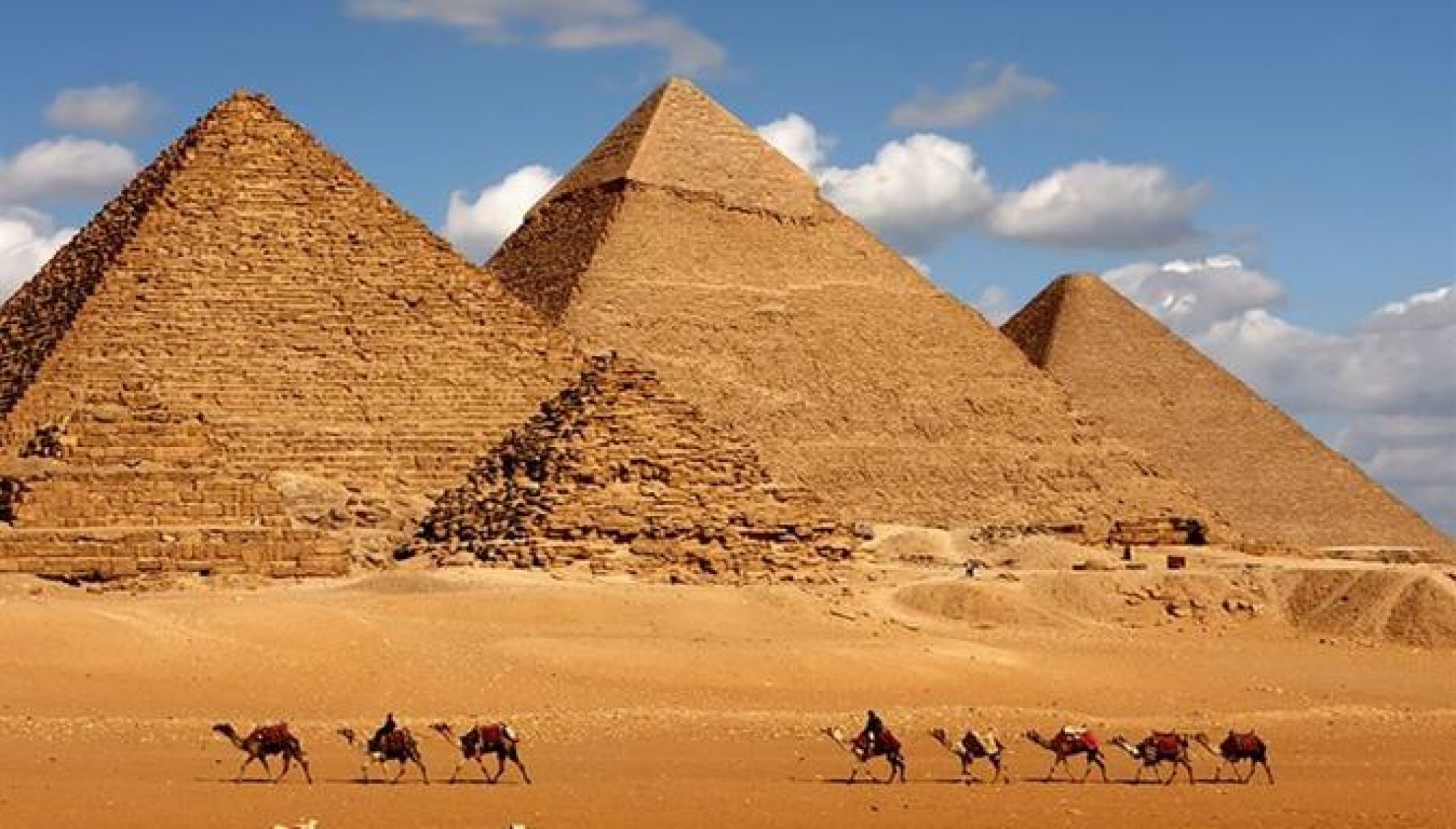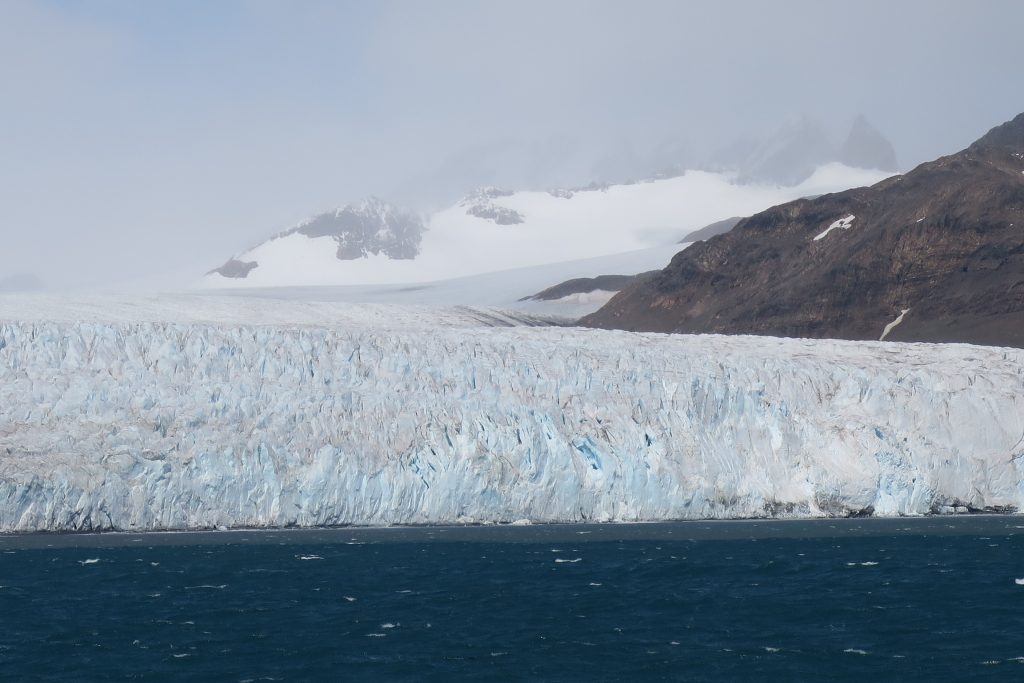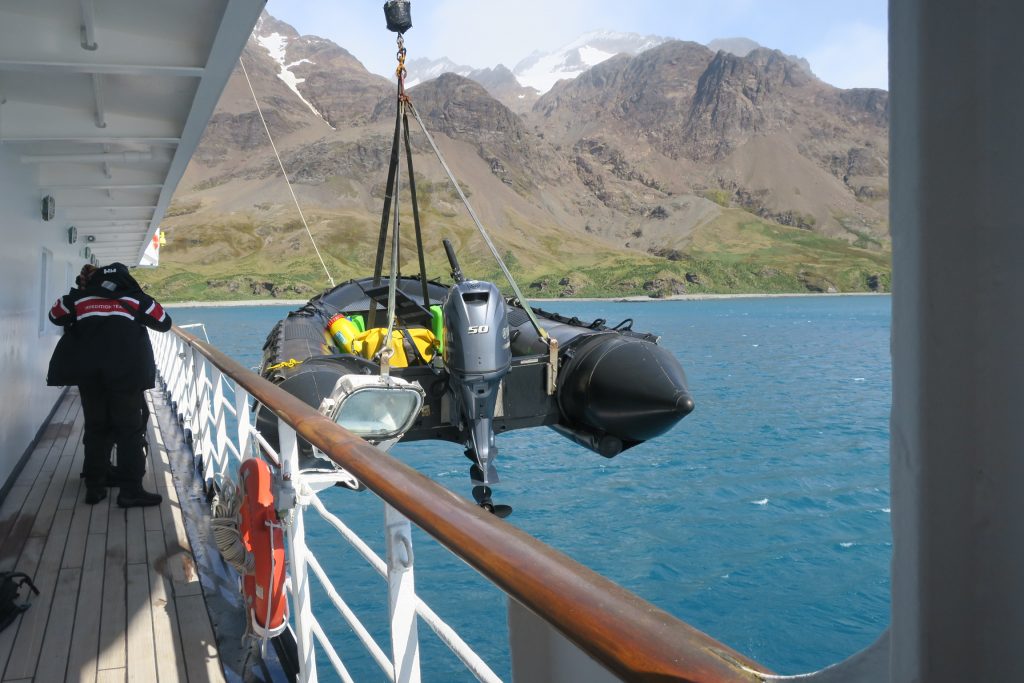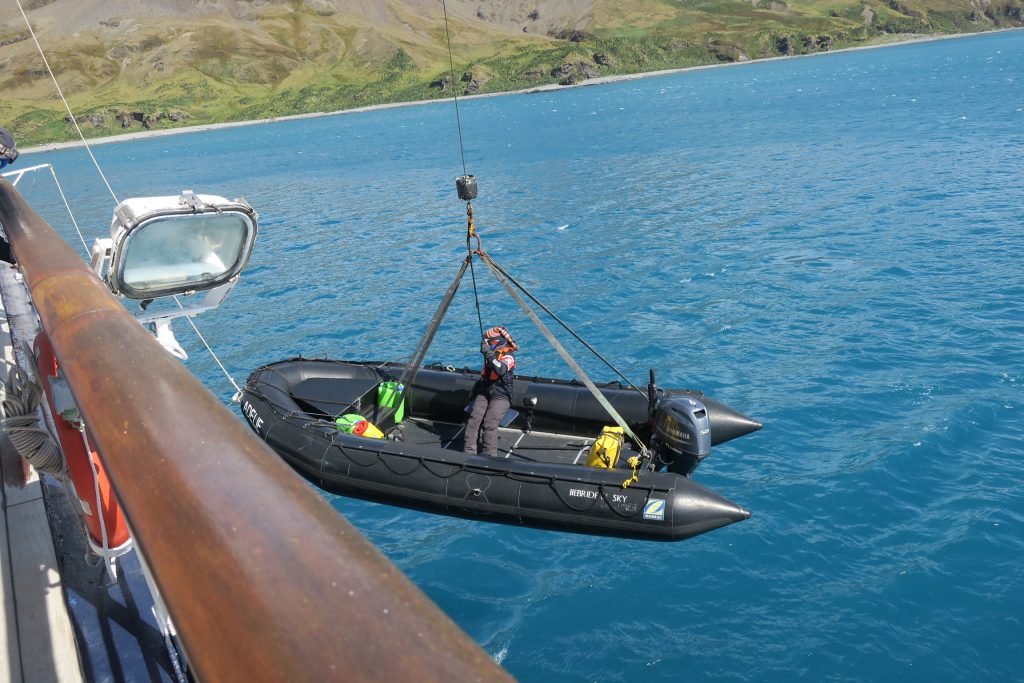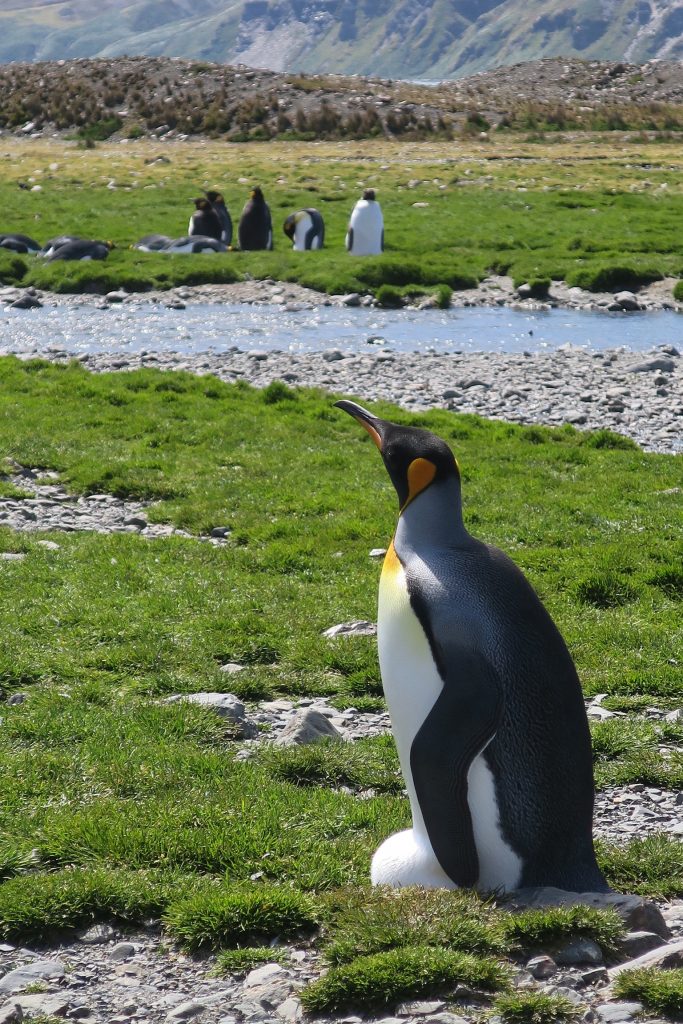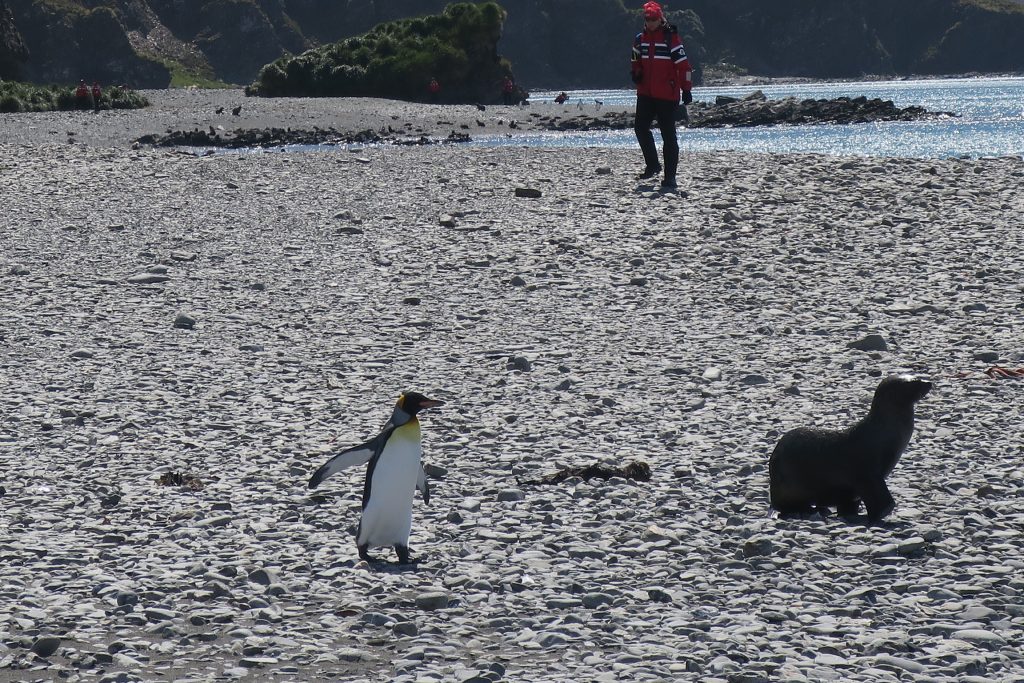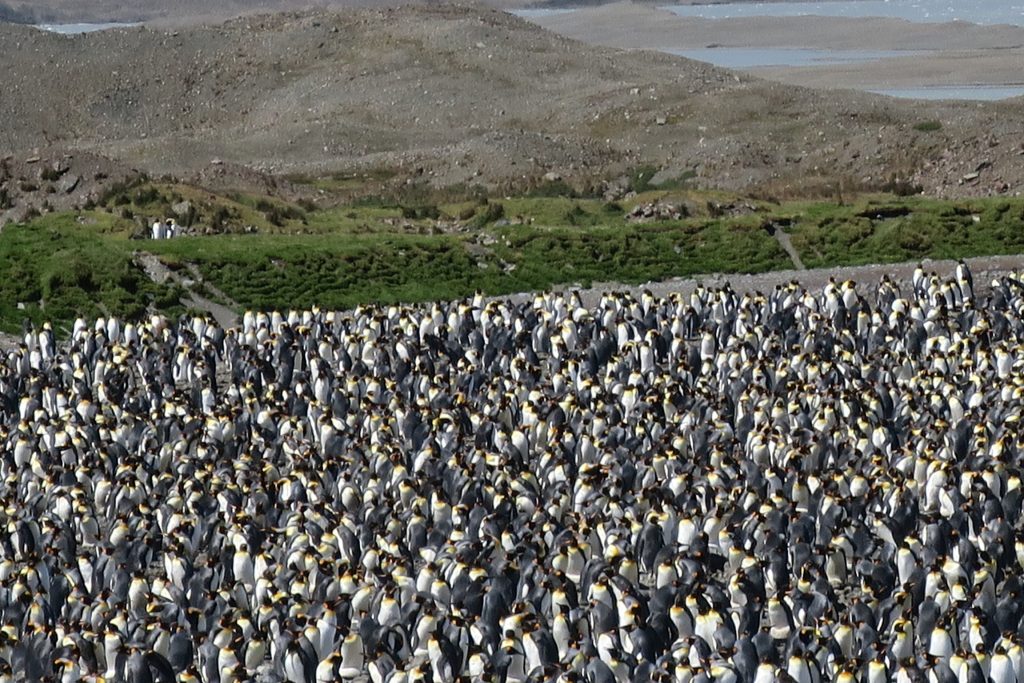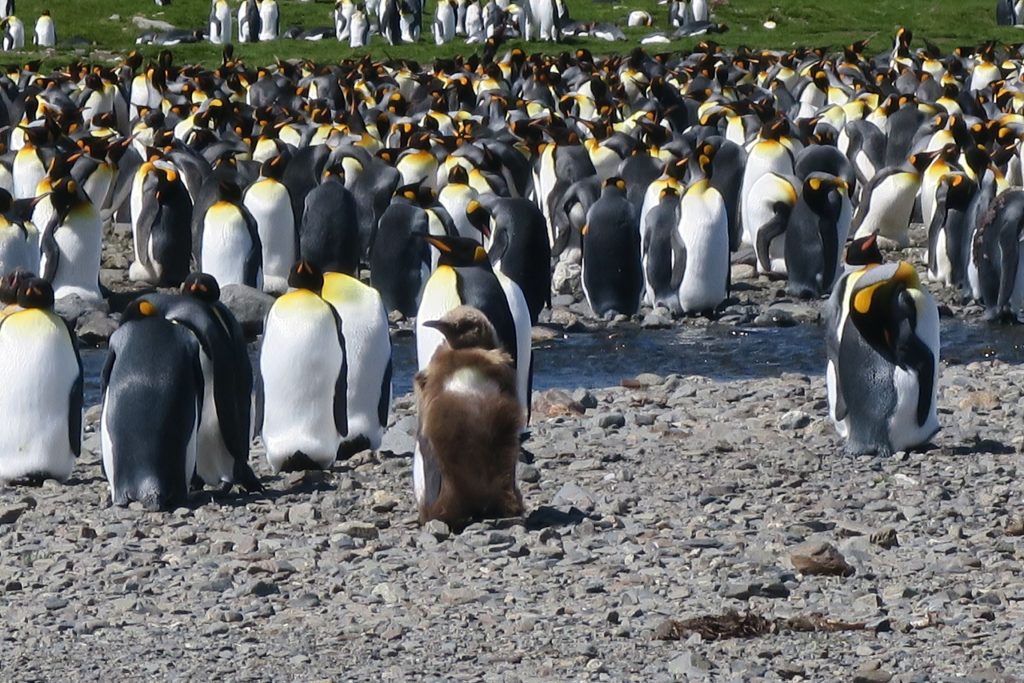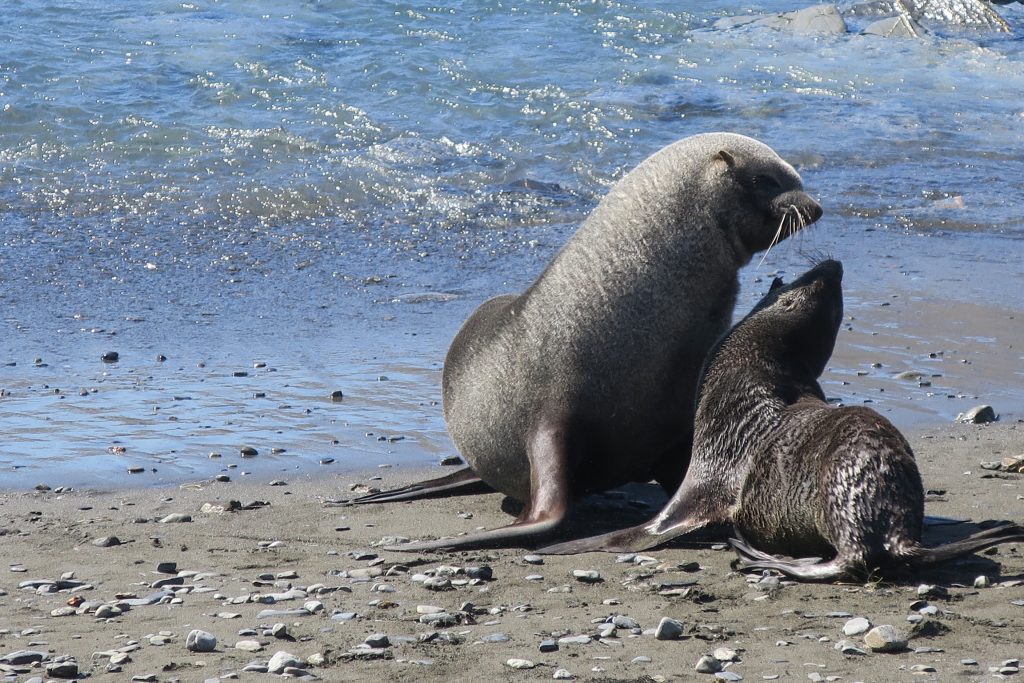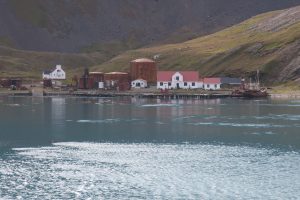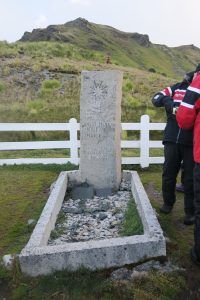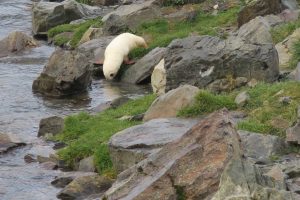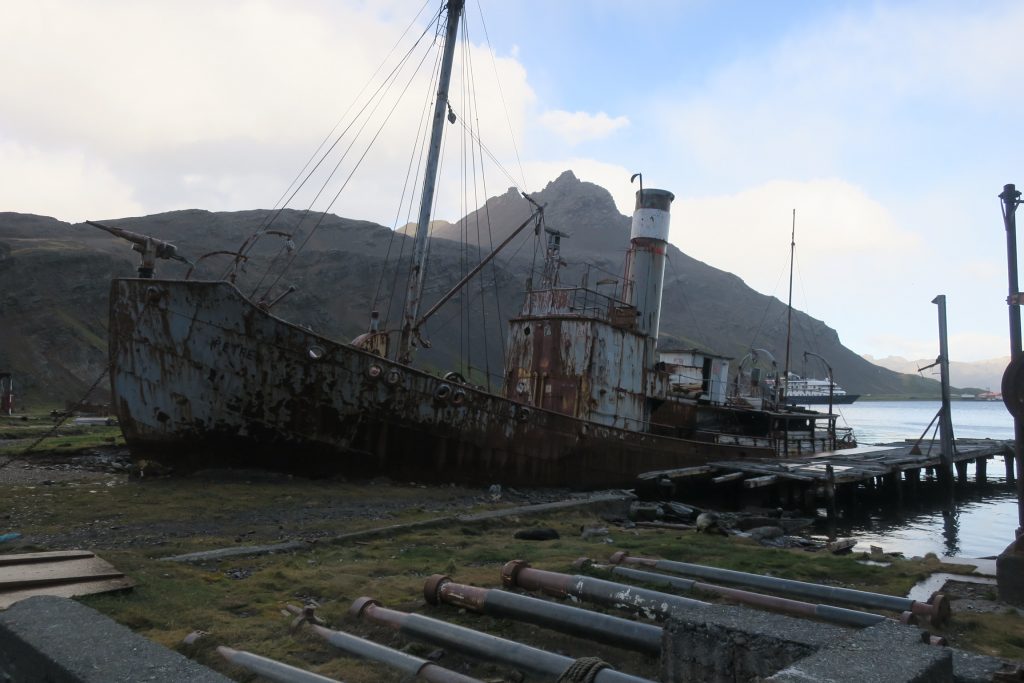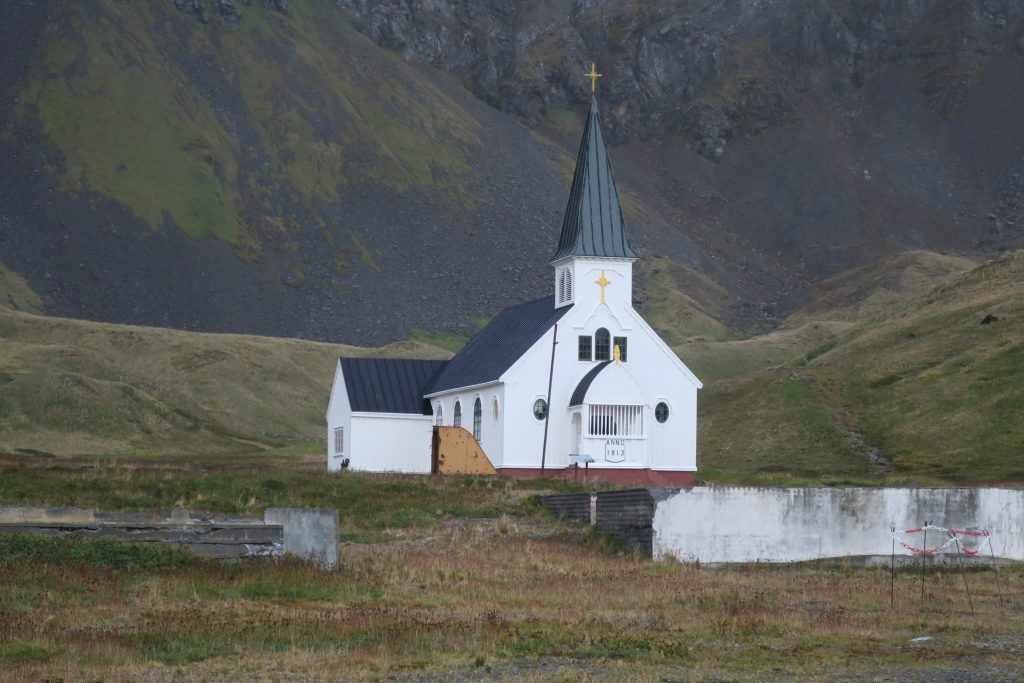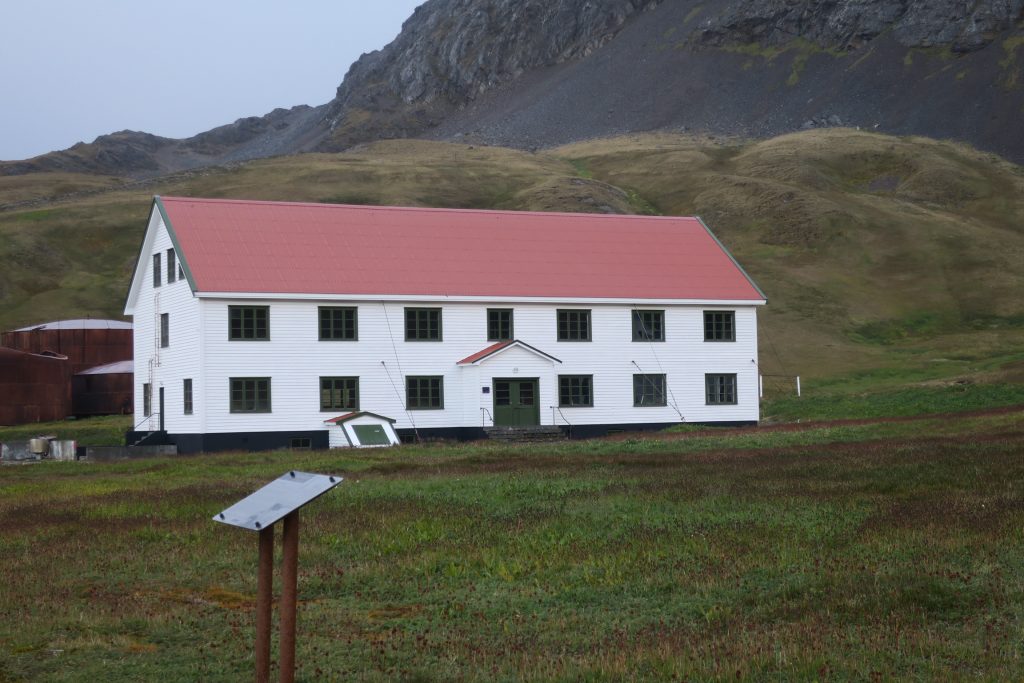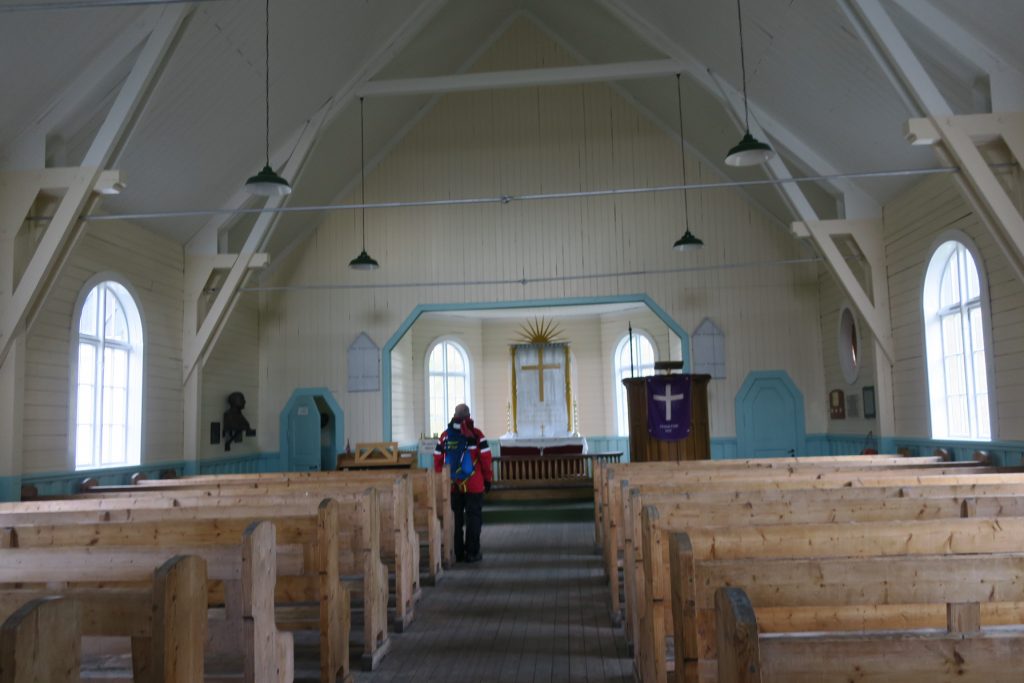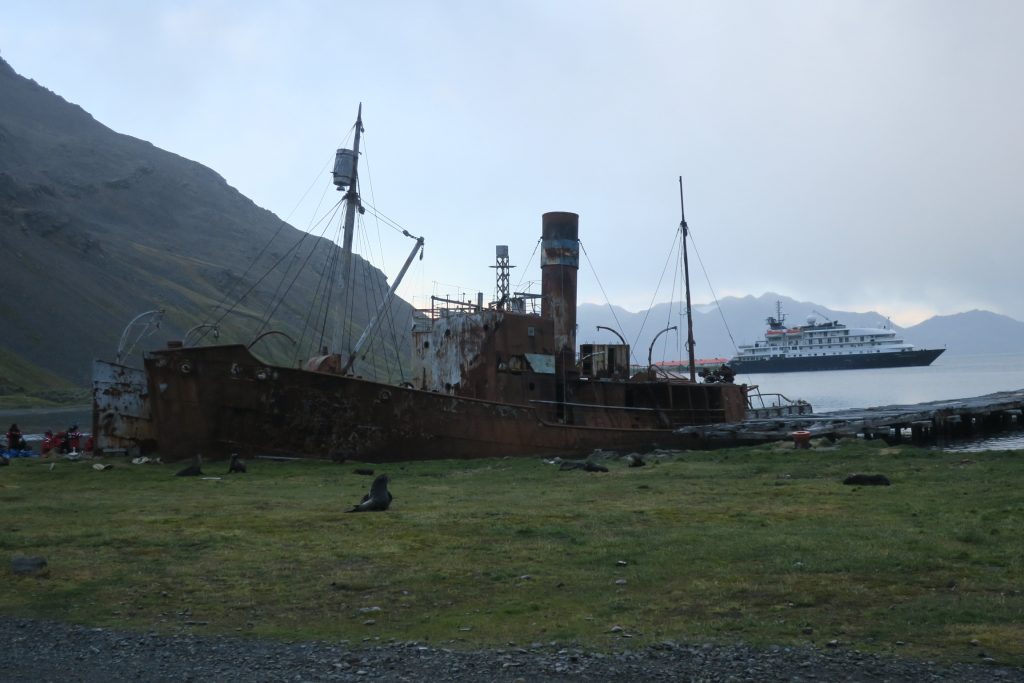We had another early morning. During the night we moved to Prion Island to see nests of the wandering albatross, the flying bird with the widest wing span in the world. It takes 14 months for these birds to fledge so they only mate once every two years. They mate for life and return every other year, to the same place they were born, to mate. They repeat their mating dance to renew their relationship. They lay just one egg and incubate it for 78 days. After the baby leaves the nest, it takes 5 years to mature and during that time it is at sea and it does not come to land.
We left the ship at 5:30 and started with shoreline cruise with Sophie, one of our kayak guides. The sun was rising and it was beautiful.
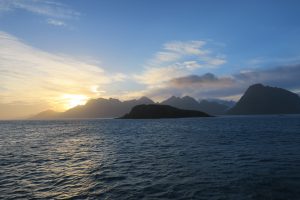
We saw lots and lots of fur seals. The fur seal population has exploded because they eat the same thing as the whales. The whale population is still recovering from being over hunted so there is lots of food in the sea. This has allowed the seals to be very successful. The babies are so curious and cute with their big eyes. We also saw birds including blue eye shags, shown here.
After about an hour we were dropped off on land and walked along a boardwalk up to nest viewing sites. Four seal babies walked in front of us for most of the way. They clearly wanted to be with us because they could have exited the boardwalk at any time. We got to the top of the hill and we saw 3 nests with the albatross incubating the egg. The male incubates first to give the female a chance to feed since she just layer the egg. It was quite foggy but here is a picture
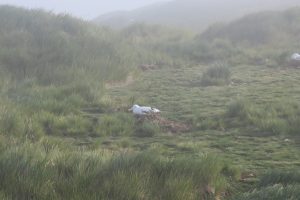
We came back to the ship and had breakfast. While we ate, the ship moved to Salisbury plain. This is the second largest king penguin rookery, with about 100,000 breeding pairs. The king penguins do not have a mating season so they can mate at any point. As a result there are penguins at all stages of the mating process.
It is very difficult to tell the male penguins from the female penguins.Here’s an interesting fact, in the bird world if the males and female look alike they are both involved in raising the chicks, if they don’t look alike the female does most of the work raising the chicks. Here are pictures from Salisbury plain.
When we left the ship it was too windy to kayak but our kayaking guides were hopeful that the wind would die down some and we would be able to kayak. So we went ashore with our kayaking garb on. After about an hour on shore, we were informed that the kayaking was on. We were picked up by a zodiac and taken out to another zodiac which was towing the kayaks. We transferred into the kayaks and off we went. It was fun to be kayaking with the seals playing in the water and the penguin floating around like ducks. There was a spot where, according to our guide, Ewan, a fresh water stream emptied into the ocean and it was roiling with seals. Here are pictures of the seals and of penguins swimming by.
After about 45 minutes of kayaking we returned to the ship.
While we were kayaking many people saw a skua, a large predatory bird, get a penguin chick. Then the skuas fought over the chick. We heard that it was pretty gruesome.
I went up to the top deck to try to see them drag the kayaks up but they weren’t bring them up yet. They have a big crane on deck 7 that they use to raise and lower them. On the first one down and the last one up a member of the expeditionary crew rides with the zodiac and transfer into or out of the dinghy on deck 4. It’s quite a lot of work getting them up and down but they can get all 10 down in about 20 minutes.
Actually I haven’t mentioned how we load into the zodiacs yet. First of all we have to have our waterproof pants and boots on because most of the landings are wet landings and because you often get wet in the dinghies from the spray. We wear self inflating life jackets. We have to get scanned off and onto the ship. They always know exactly who is on shore and who’s on the ship. Then we have to dip our boots in biocide. Usually there are three or four people helping us get into the dinghy. Two in the dinghy and one or two on the ship. One person on the ship grabs the back of our life jacket and the optional second person takes our arm. We step onto a rubber step on the edge of the ship. Then we take an arm of the two people in the dinghy and step on to the edge of the dinghy, then to a step stool and finally onto the floor of the dinghy. One person hangs onto us until we a sitting on the edge of the dinghy. There are ropes along the edge of the dinghy to hold onto when the dinghy is moving. Then we get to shore they spin the zodiac so that the backend in against the shoreline. We slide to the back and flip our legs out, stand in the surf and walk up the beach where we take off our life jackets and stow them in bags. The life jackets are one way they make sure everyone is back on the ship. When we get back on the ship we step into a container with a rough bottom and scrub brushes on the sides to wash off our boots and then into the biocide again. They usually greet us with hot chocolate. All very efficient.
Once we were back on the ship we had lunch and after lunch we pulled anchor and headed for Antarctica.
That evening we had a auction to raise money for the S. Georgia rat eradication program. We bought a Shackleton photo printed on fabric. Overall the auction raised close to $7,000 which wasn’t even close to the record of $50,000. It was a lot of fun. Here’s a picture of a map that one of the expeditionary team member used as a canvas.
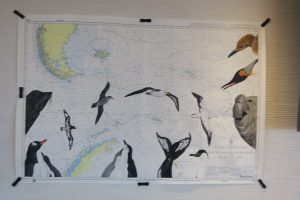
Here is a map of our stops on S. Georgia and our journey so far
